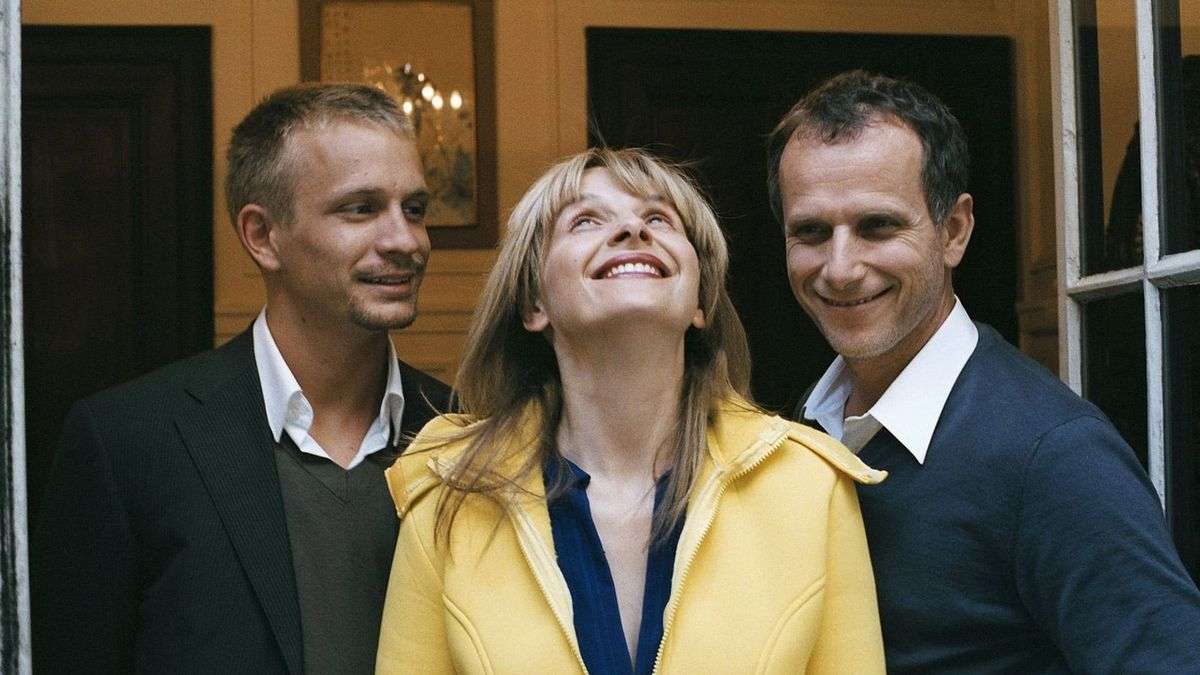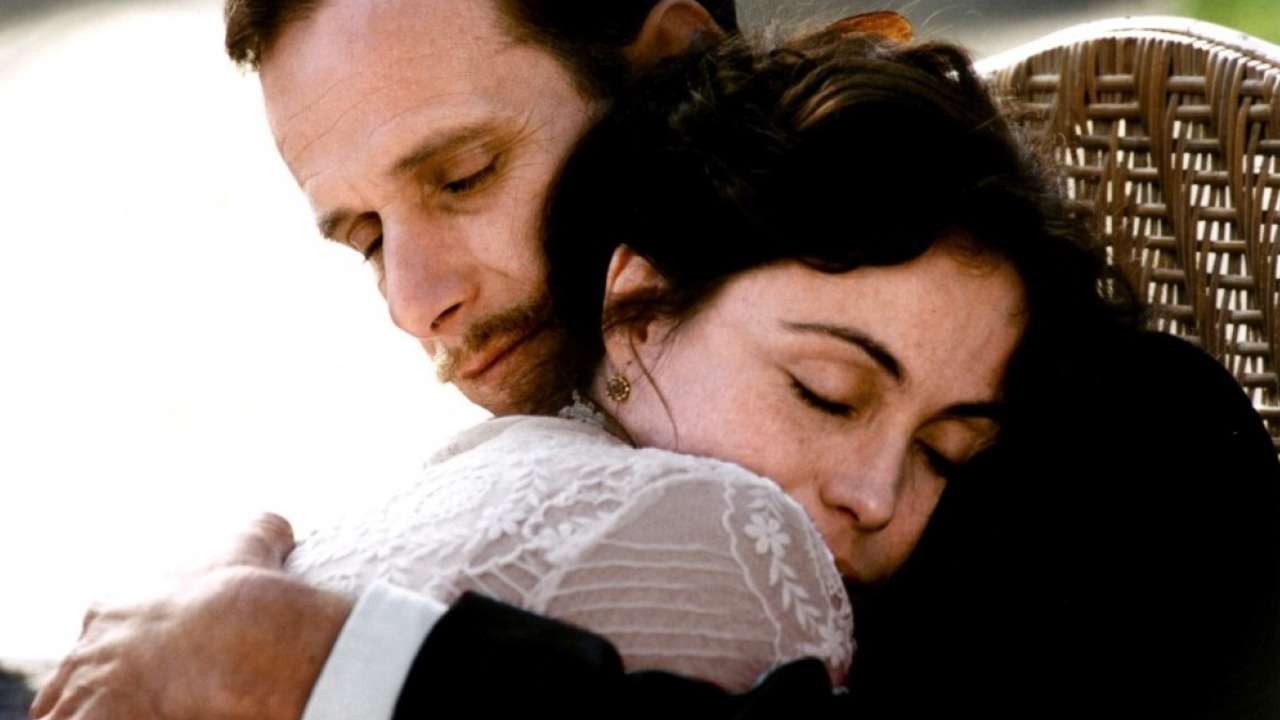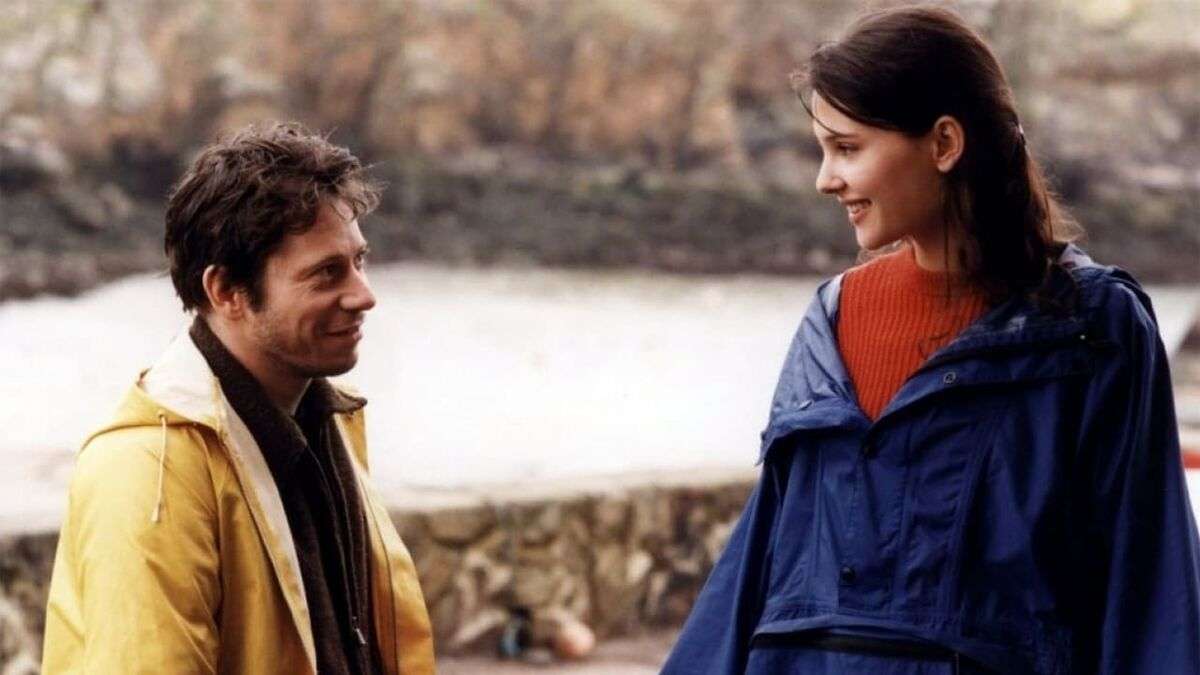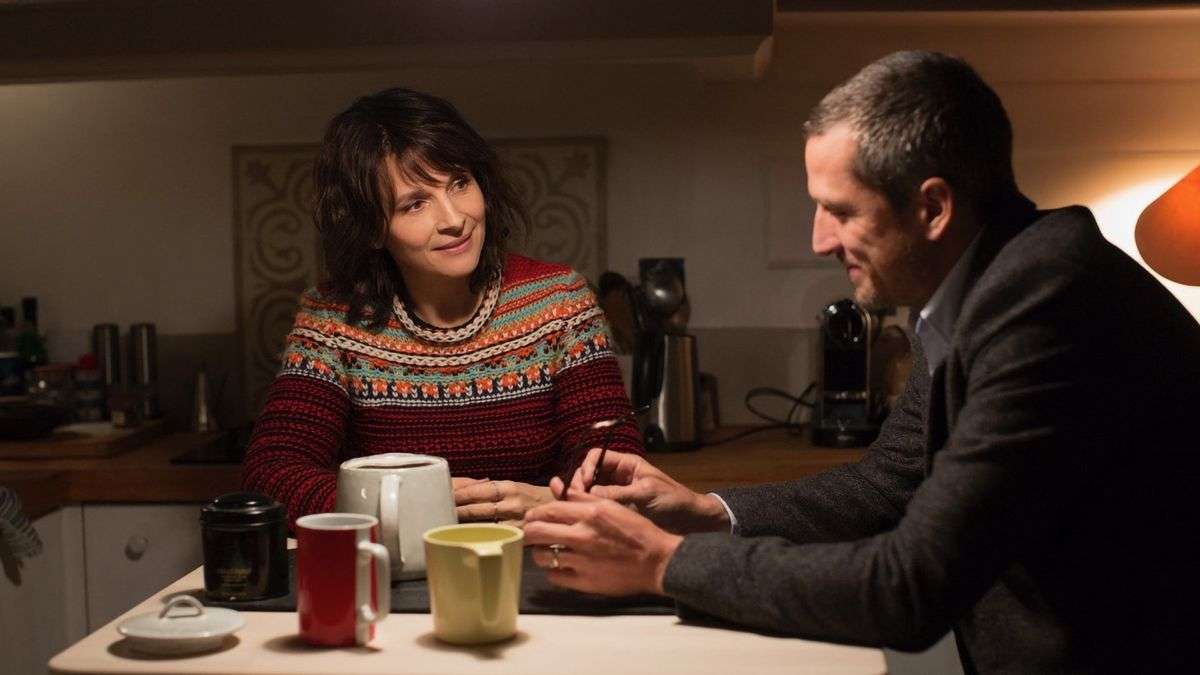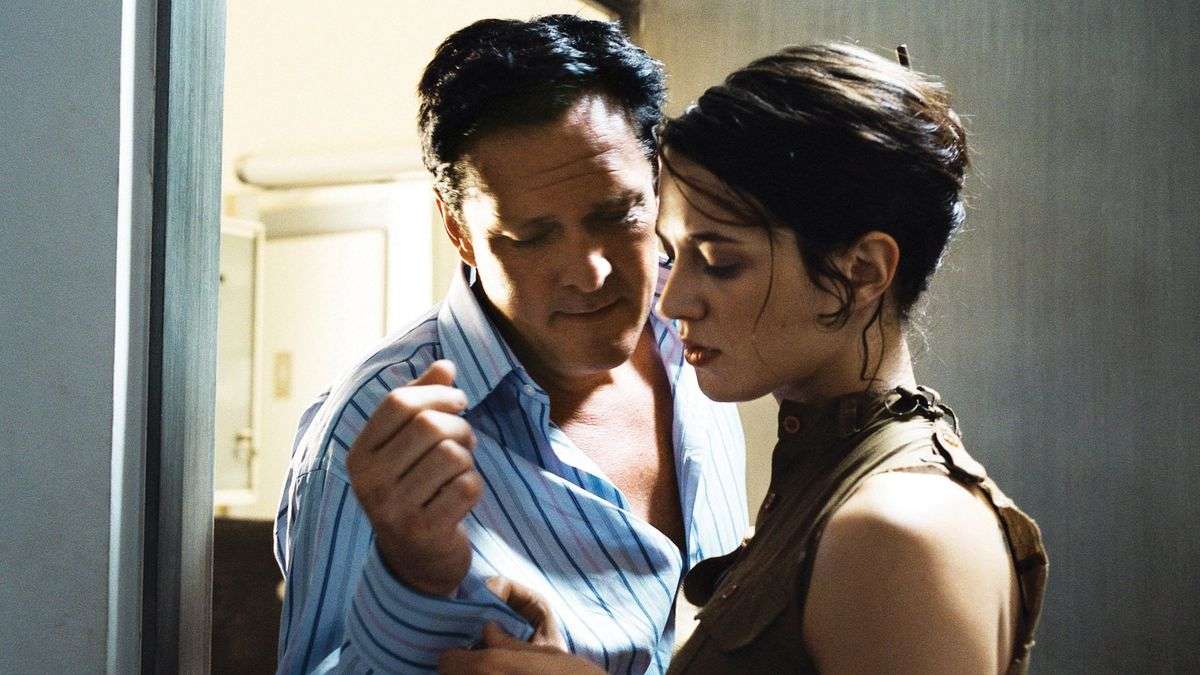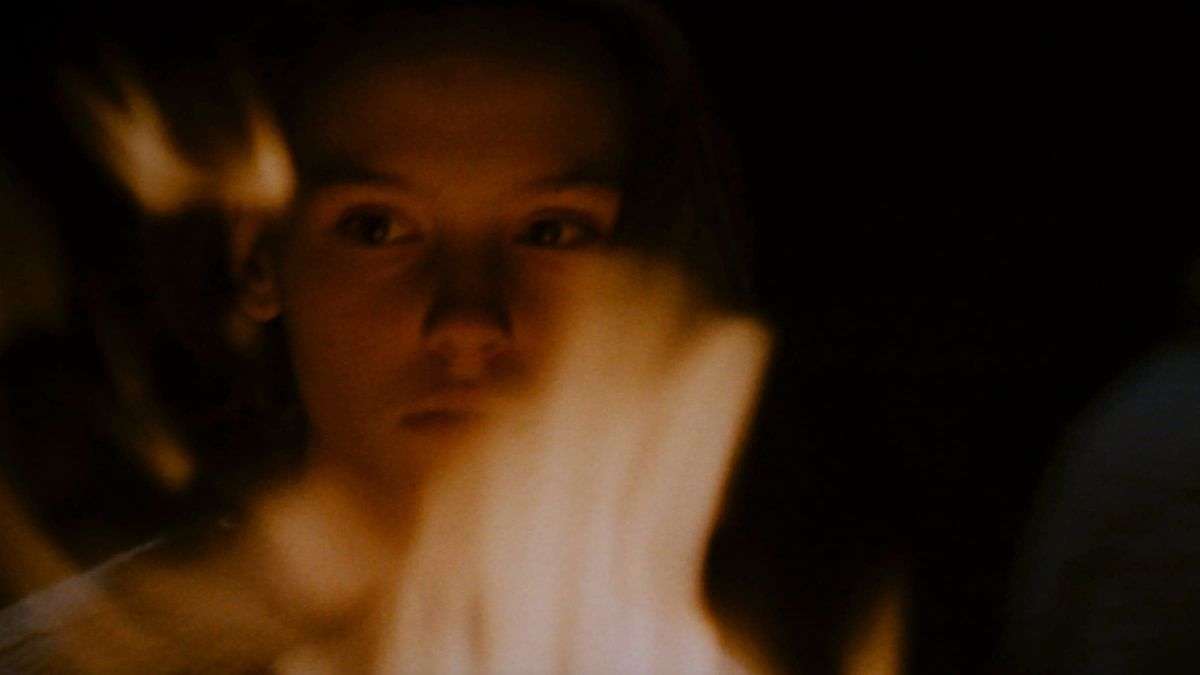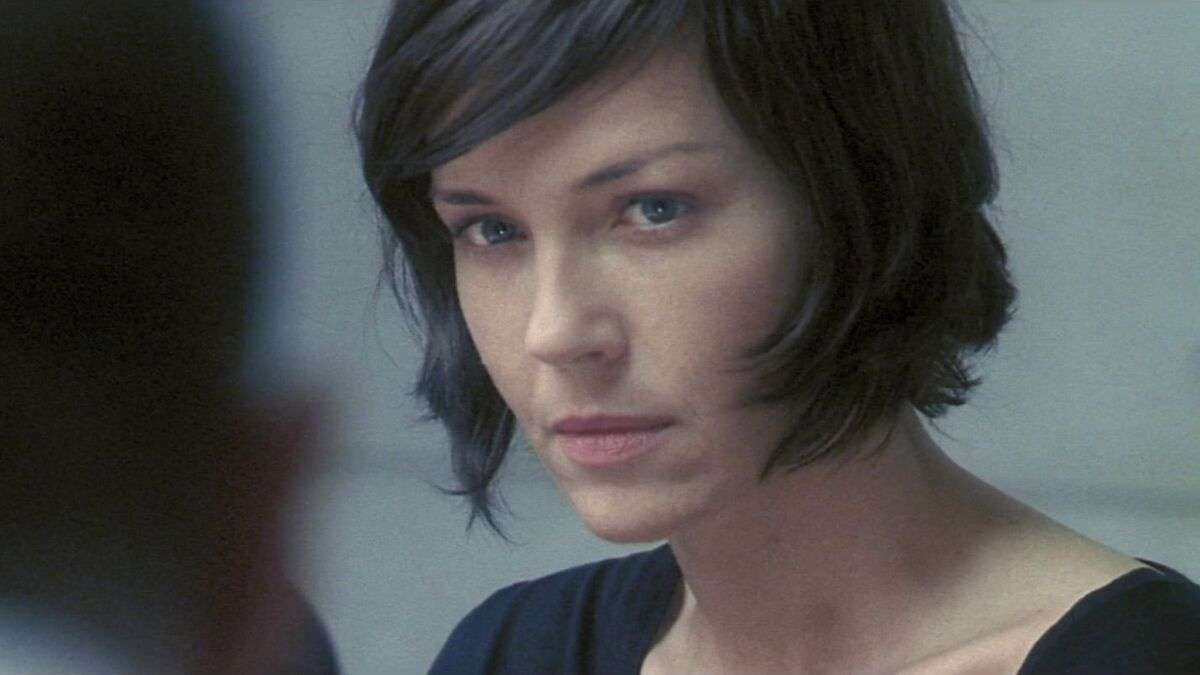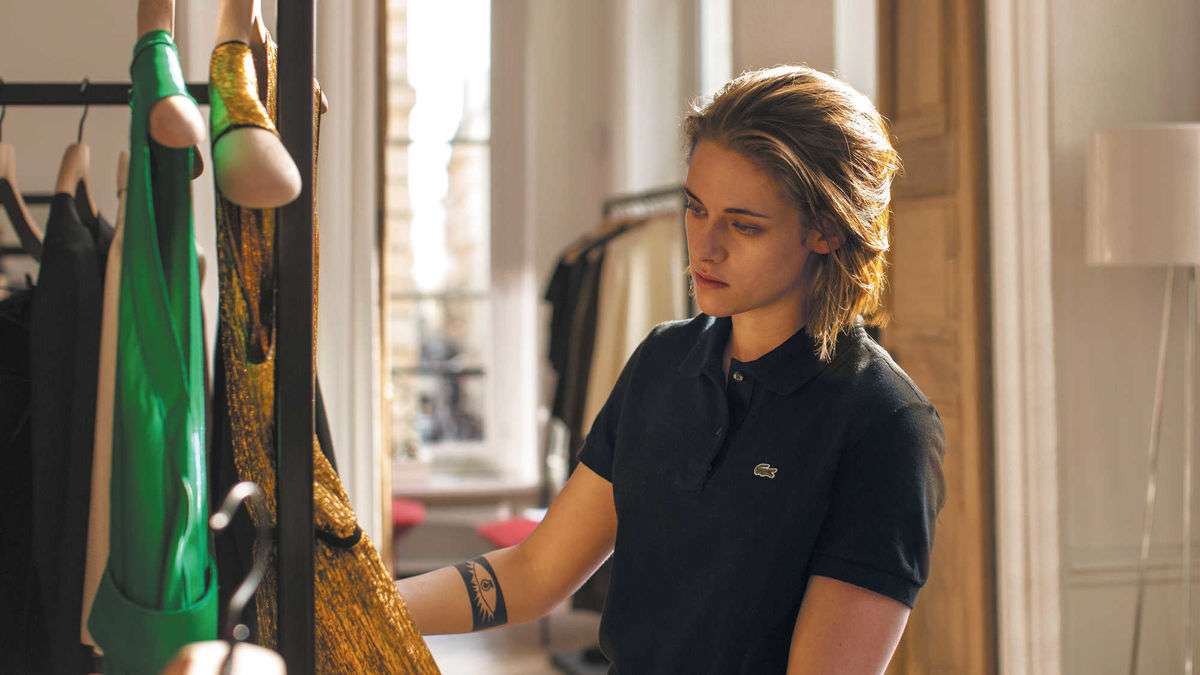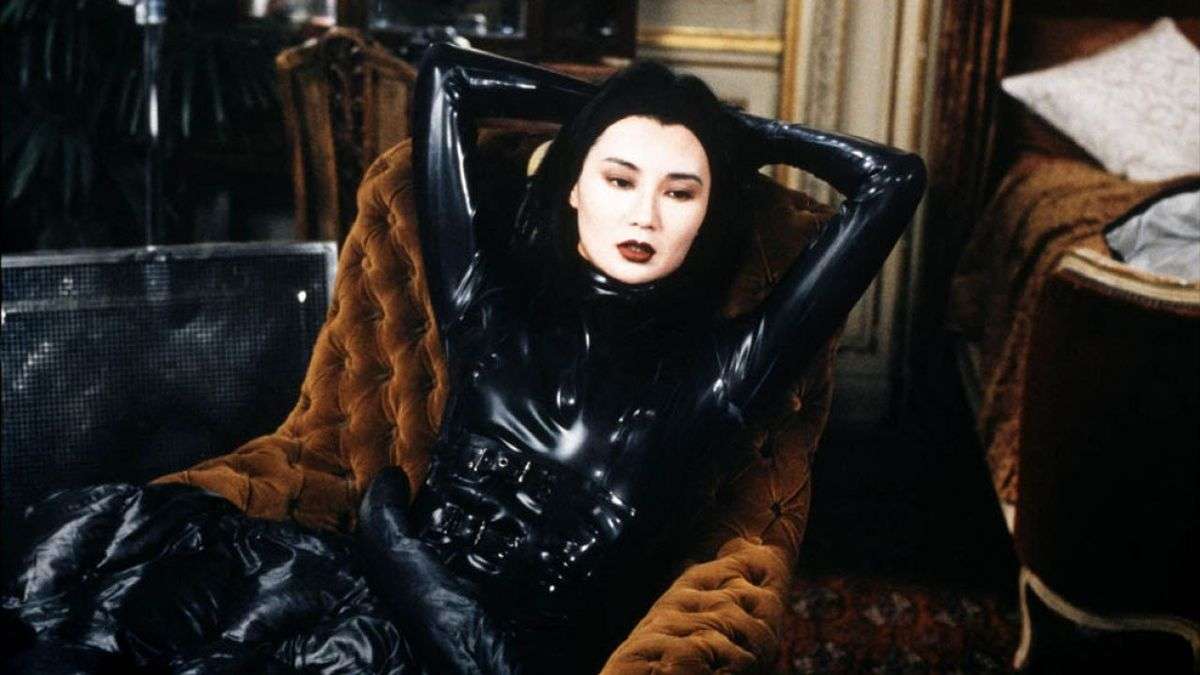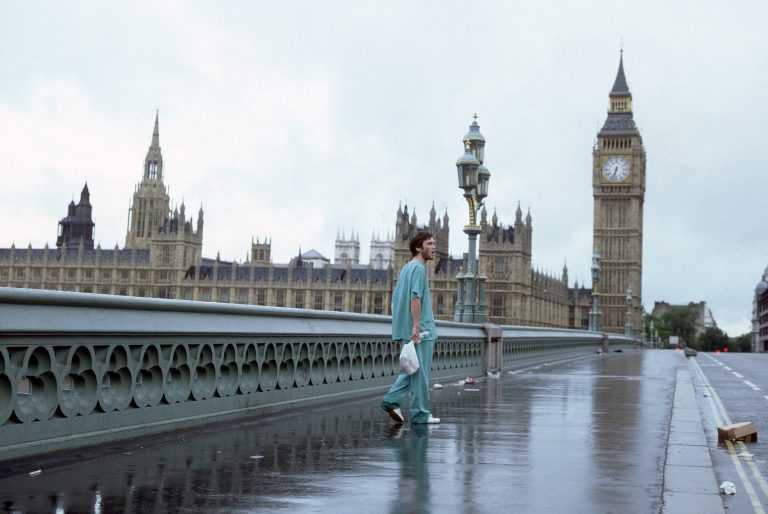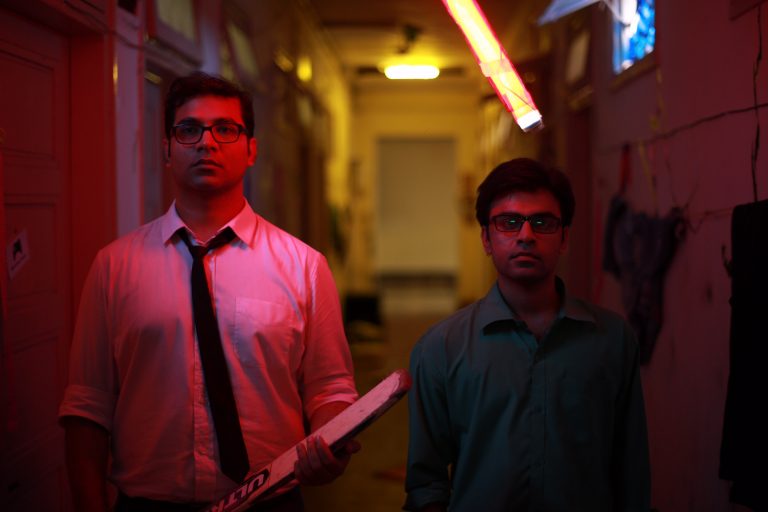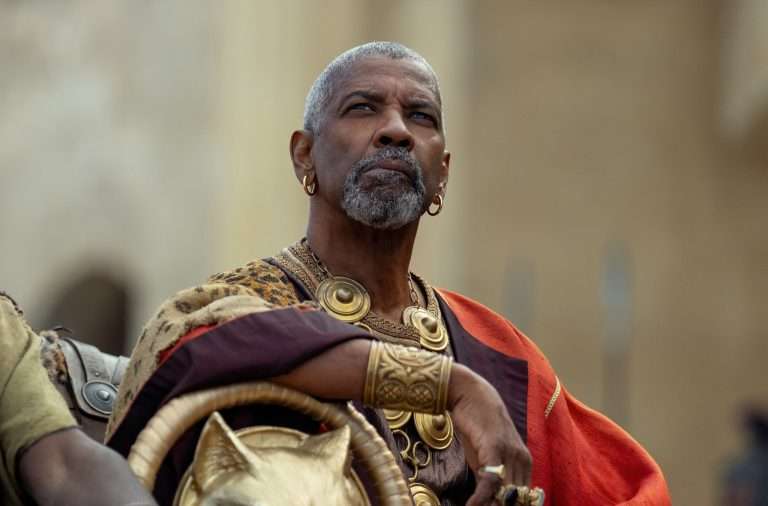Olivier Assayas is a film lovers’ filmmaker – a towering figure of the modern arthouse scene; his filmography runs the gamut of cinema genres. He has made thriller, noir, horror, period, romance, and coming-of-age movies and seems to develop as an artist with each new entry in his oeuvre. That ability to evolve his style and approach is what is most remarkable about Assayas, a filmmaker who is obsessed with the idea of obsession, devotion, and love. His raison d’etre is perhaps best described in the words of one of his characters: “I’d really like to know the meaning of this hope at the heart of all things.”
Assayas started out young, informed about the French film industry by his father, who was a professional filmmaker. Before directing films full-time, he worked as a film critic, spending five years at Cahiers du cinéma, the iconic cinema-focused magazine that has platformed such massive French cinema figures as François Truffaut and André Bazin. Assayas was well at home within that legacy. After producing his first film at the age of 31, the director was off to the races, releasing six feature films over the span of ten years. He has kept up that pace over the years, releasing a new project almost every two years.
What’s remarkable is that Assayas’s work has maintained its vitality even during the latter portion of the director’s career. Some of his most well-regarded films were released during the 2010s, and he’s proven himself adept at adapting to an ever-shifting industry (he made a film with Netflix in 2019, after all). Diving into his filmography is honestly a treat for fans of cinema, so let’s break down his ten best films into a ranked list for all the nascent Assayas-heads out there. Trust us, you won’t regret watching any of the films listed below.
10. Summer Hours (2008)
“Summer Hours” is regarded as one of Assayas’s best films, and it’s really a testament to his filmography that a film this solid is located this far down the list. While it is not the most dramatically compelling movie of the director’s career, it deals with timeless themes of maturity and newer generations struggling to do right by their forebears. It marked the first time that Assayas shifted his gaze to markedly middle-aged characters, and the decision was well made.
The story follows a trio of siblings (played by Juliette Binoche, Charles Berling, and Jérémie Renier) who are left reeling by their mother Hélène (Édith Scob)’s death and the decision of how to divide her assets amongst themselves. Their mother leaves behind a house full of art collected by their late uncle, and Summer Hours asks questions about the value of art and how perceptions around it over time contrasted with the aging of the siblings and their own children.
At the heart of “Summer Hours” is a concern over whether values can endure across generations, which is symbolized through the selling of Hélène’s art and the continuous drift between three generations that is explored in the movie. It all concludes with a party scene that will remind you of how excellent Assayas is at shooting scenes of young people celebrating their youth. While the film overall is light on plot, its thematic threads more than makeup for the dramatic inertness.
9. Sentimental Destinies (2000)
After coming into his own as a filmmaker during the ‘90s, Assayas clearly cashed in his cultural capital with this film. “Sentimental Destinies” is a lavish period piece stuffed to the brim with high-quality costumes, sets, and mise en scène. At nearly three hours long, it is also one of the longest films of Assayas’s career (only surpassed by his television work if you count those as films). Watching the movie, one gets the sense that they’re watching a director who is attempting to draw their own epic.
Unfortunately, with productions of this scale, you’re bound to lose out on some vitality, and “Sentimental Destinies” suffers somewhat from the indulgence adorning its surface. The story follows a pastor named Jean Barnery (Charles Berling) who leaves his position to be with a young woman named Pauline (a tremendous Emmanuelle Béart). Set during the turn of the twentieth century, the film follows the couple as Jean takes up his family’s porcelain business and struggles to do right by his ex-wife (played by Isabelle Huppert).
The romantic angle of the movie is riveting in places, and the production design does a lot to keep you engaged in a story that is classically romantic (very much like something out of a Jane Austen novel). By its conclusion, the direction of the plot feels somewhat happenstance, a little too obvious, but it remains a powerful story about love and doing your best to fulfill your duties to those around you. It hence speaks to themes that run throughout Assayas’s body of work (the quote in the introduction to this list is actually from the last half hour of this movie!).
8. Late August, Early September (1998)
Released shortly after his breakout hit “Irma Vep,” “Late August, Early September” is a very interesting work. A freewheeling, seemingly casual film about our relationship with youth, this film sees Assayas work with Mathieu Amalric and a cast of terrific French actors clearly enjoying the chance to inhabit realistic, down-to-earth human beings (the ensemble includes Virginie Ledoyen, whose work here is almost as good as her prior collaboration with Assayas).
The film follows Gabriel (Amalric), a young man who will most likely be one of the most typical French men you will have ever seen on screen. Gabriel is a divorcee whose romantic relationships are all over the place. He attempts to sell the flat he once owned with his ex (Jeanne Balibar) while seeing another woman named Anne (Ledoyen). His financial situation is tenuous, and he has a volatile relationship with Adrein (François Cluzet), a struggling writer who is also seeing a woman much younger than him.
That younger woman is played by a teenage Mia Hansen-Løve, who is now a well-regarded film director in her own right and who was in a relationship with Assayas from 2002 to 2017. That little piece of information makes “Late August, Early September” a much more poignant film than it might initially appear to be. The film ends with a deliriously ambiguous scene that makes one thing clear: Assayas is investigating our relationship with youth. His conclusions are an enigma for the audience to crack.
7. Non-Fiction (2018)
Over the years, Assayas has developed a reputation for making films so enamored with the discussion of intellectual ideas that they end up feeling like essays (which has earned some of his films the label of “Assayist,” a play on the word “essayist”). Mileage on whether that style of filmmaking is effective varies, but this writer certainly finds it very enjoyable. “Non-Fiction” is one of the most essay-like films of Assayas’s filmography, and it is quintessentially Assayist, powered by the same intelligent energy at the core of the filmmaker’s best films.
Starring an ensemble that includes Guillaume Canet, Juliette Binoche, and Vincent Macaigne, this movie is heavily reliant on the terrific performances it features. You need those if you want dialogue as theoretically dense as the stuff here to land, and land it certainly does. The story follows Canet’s Alain, whose relationship with his wife Selena (Binoche) is lifeless. Both of them are seeing other people, and their infidelity is practically an open secret between them (yet another example of Assayas making movies that feel almost stereotypically French).
Beyond the complicated relationship dynamics, however, “Non-Fiction” is interested in what the digital age represents in relation to the production and, more prominently, consumption of art. Alain’s publishing company is in the middle of a digital refresh, and half the film is spent discussing the question of whether literature still has a place in today’s fast-moving world. If ideas like those interest you, there aren’t many films more up your alley than “Non-Fiction,” which speaks to Assayas’s continuing obsession with the role of art in the world around us.
6. Boarding Gate (2007)
“Boarding Gate” is, for this writer’s money, the coolest film on this list (though number three and number one certainly give it a run for its money). A neo-noir thriller about the ways in which capitalist societies disenfranchise the people at the lower rungs of the ladder, “Boarding Gate” features some of the most stripped-back filmmaking of Assayas’s career. Cold-blooded and ruthless, you will leave this film feeling like you need a shower.
The movie stars Asia Argento, Michael Madsen, and an international ensemble that speaks to Assayas’s love for international cinema. It follows Sandra (Argento), a young woman trying to discard the hand she’s been dealt by her dealings with various unsavory characters in the world she inhabits. That world is a noirish shadowscape, corporate and unknowable and completely beyond comprehension by design. The plot, which is full of double-crosses and grimy sequences of tension, is not the point here.
That’s to say that “Boarding Gate” relies on vibes more than anything, and it’s got vibes in spades. Usually, the most thrilling moments in Assayas films are the ones where characters have an intellectual discussion about the nature of art and commerce, but that’s not the case here; “Boarding Gate” is a straight-up thriller, and Argento is a bonafide action star. The film ends with a moment of transcendence that’s as thought-provoking as it is devastating – an Assayas specialty.
5. Clouds of Sils Maria (2014)
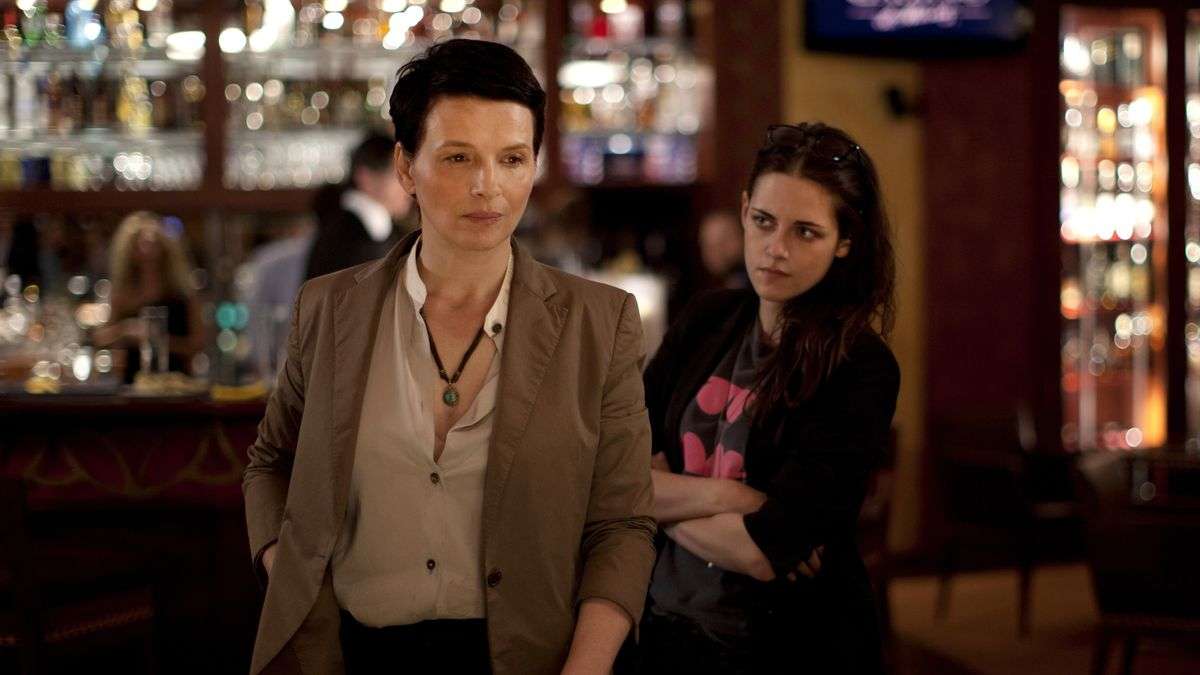
This film marked Assayas’s second feature film collaboration with Juliette Binoche and his first collaboration with Kristen Stewart (a creative partnership that would go on to be very fruitful, to say the least). It features Assayas firmly back in his trademark “Assayist” mode, and the result is a highly entertaining and evocative exploration of performance as it pertains to our day-to-day lives and the evolution of art over time.
That might make it sound like Assayas is covering old ground with this film, but “Clouds of Sils Maria” is a fantastic film in its own right and brings more than its fair share of fresh ideas to the table. The story follows an actress named Maria Enders (Binoche), who has signed on to act in a play she previously performed in at the start of her career. As she prepares to take on a new role, she is aided by her American assistant, Valentine (Stewart), and the pair’s relationship goes on a rough-and-tumble journey as the runtime develops.
That relationship is at the heart of “Clouds of Sils Maria,” and Assayas resolves it in a way that is guaranteed to catch even the most observant of viewers off-guard. Even now, this writer is unsure of exactly what exactly Assayas was getting at with the conclusion of that particular plotline. However, the sheer strength of the ideas it leaves you with is powerful enough to leave you satisfied with your viewing of the movie. Assayas deals in ideas, and “Clouds of Sils Maria” is laden with them.
4. Cold Water (1994)
“Cold Water” is the film that put Assayas on the map. His fifth film was screened at the Un Certain Regard section at the 1994 Cannes Film Festival, and it is easy to see why it got the acclaim that it did. A period film that feels fresh, authentic, and decidedly independent in spirit, “Cold Water” drips with style and an assured point of view that makes you feel as if you are in the hands of a master filmmaker. It sells you on Assayas with the sheer ambition of its production.
The story follows two teenagers struggling with their identities (played by Cyprien Fouquet and Virginie Ledoyen, the latter of whom is absolutely brilliant here). They attempt to find solace in each other, and as the film develops, the viewer is exposed more and more to the extent of their disillusionment with the world around them. “Cold Water” ends on such a staggeringly poetic and poignant note that it leaves you reeling – Assayas has never delivered an ending more perfect than this one.
This is also one of his more creatively robust projects – it features much more elaborate use of music than you will find in his other films, and the latter half of the film contains a protracted sequence at a party that is considered by many to be one of the greatest party sequences ever committed to film. While nothing here can overshadow the devastation of Cold Water’s final moments, there is plenty to appreciate here beyond this film’s splendid tribute to the demise of youth.
3. Demonlover (2002)
This film is one of those love-it-or-hate-it pictures. It is not possible to be in-the-middle on “Demonlover,” which is not only one of the strangest films of Assayas’s career, but also one of the strangest films produced in the 21st century. A sleazy noir film that serves as an indictment of capitalism and everything it represents, this is not a movie for the squeamish. Like “Boarding Gate,” it feels like an uncompromising look at the dark underbelly of modern society.
Describing this film’s plot is an enjoyable exercise in itself, as is the craziness of Assayas’s gonzo script. “Demonlover” is about the corporate struggle over the ownership of a Japanese hentai company, complete with violent assassination attempts and underhanded espionage. It stars Connie Nielsen, Charles Berling (an Assayas regular, as you can probably tell by this point), and Chloë Sevigny, with Nielsen especially delivering a powerful performance as Diane de Monx (an executive for the company seeking to buy the Hentai studio).
Right up until its ending, “Demonlover” keeps you guessing as to how it will resolve its many plot threads, many of which are so convoluted as to be practically indecipherable. Assayas keeps things moving with his trademark moving camera, however, which lends the film so much momentum that you barely register that nothing quite makes sense. The whole thing is so cool, so original, and so energetic that you stay engrossed in it right up until its disappointingly obvious conclusion. However, it still gets points for originality!
2. Personal Shopper (2016)
Assayas’s second collaboration with Kristen Stewart, “Personal Shopper,” is perhaps the most well-known film in the director’s filmography (at least for contemporary audiences). It won him the Best Director Award at the 2016 Cannes Film Festival, and it is, again, a stylistic evolution over everything the director has made before. Why is that? Well, it is because “Personal Shopper” is a horror film and a mightily effective one at that.
The story follows a woman named Maureen Cartwright (Stewart), a “personal shopper” for a famous model working out of Paris. Maureen is still dealing with the death of her twin brother, who passed away due to a heart condition prior to the start of the film. That sets the backdrop for Personal Shopper’s tale of ghostly occurrences and bizarre sequences. Maureen starts getting texts from a seemingly otherworldly being, and things get more and more intense as the plot develops.
As with the best of Assayas’s work, “Personal Shopper” is charged with tremendous cinematic energy, the director’s camera constantly roving the faces of the cast members. By virtue of being a horror film, however, it is more tense than anything else in Assayas’s filmography, a powerful rollercoaster ride that ends on a note that is (for Assayas) typically ambiguous and thought-provoking. Are otherworldly beings around us or within us? That is the question Assayas seeks to ponder.
1. Irma Vep (1996)
“Irma Vep” is unlike anything you will have seen before. In the introduction to this list, we covered how Assayas is interested in exploring obsession, and there is no film in this list that explores obsession more poignantly than “Irma Vep.” This film serves as a symbol of Assayas’s obsession with cinema, which manifests itself in his obsession with star Maggie Cheung (whom you will probably have seen in “In the Mood for Love”). Assayas and Cheung were actually married for three years, from 1998 to 2001. That relationship obviously started with this film, which serves as a love letter to both Cheung and cinema as a medium.
Things actually get quite meta with this movie, which has Cheung play a version of herself who is tasked with performing in a remake of the French film “Les Vampires.” As the production gets more and more chaotic, the reality of the film begins bleeding into the reality of the real world until it becomes unclear what is real and what isn’t. If it is not already clear, “Irma Vep” can be confounding to experience, but it is precisely that quality that is so enrapturing. The movie has a lot on its mind, and entertaining its ideas is thoroughly invigorating.
In 2022, Assayas directed a miniseries for HBO, also titled “Irma Vep,” which stars Alicia Vikander and is a reboot of a story about a reboot. That speaks to how this film is one of the director’s most enduring works, emblematic of some of his best qualities. It’s gorgeously shot, breathlessly paced, and brilliantly mysterious. Assayas is a writer-director of ideas, and “Irma Vep” delivers the full package of his gifts in a way that no other film on this list quite manages. It stands to this day as a brilliant work of cinema about cinema.

